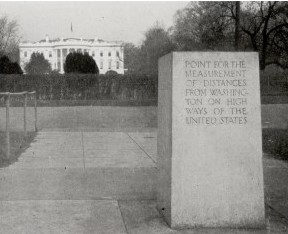|
Posted: 10/21/2014 11:55:02 PM EDT
The Bankhead Highway was one of the first modern highways in the US, going across the southern United States from Washington, DC to San Diego. It was named after Alabama Senator John H. Bankhead, who led the congessional push for federal road appropriations leading to the Federal Aid Road Act of 1916.
 "In the early years of the twentieth century, as more and more Americans began traveling by automobile, a clamor arose for better roads than the prevailing trails and mud tracks. The Good Roads Movement came out of that clamor, and when the Federal Aid Road Act achieved passage in 1916, Rep. Bankhead was ready with his plan for a national thoroughfare that would link the older, established states of the East and South with the new ones in the West. Though slowed somewhat by World War I, construction nonetheless proceeded on the highway, soon to be known as the Bankhead Highway. By the late 1920s, the highway was completed, and just as Route 66 would do twenty years later, the "Broadway of America" brought prosperity and commerce to the towns and cities along its route."
"In the early years of the twentieth century, as more and more Americans began traveling by automobile, a clamor arose for better roads than the prevailing trails and mud tracks. The Good Roads Movement came out of that clamor, and when the Federal Aid Road Act achieved passage in 1916, Rep. Bankhead was ready with his plan for a national thoroughfare that would link the older, established states of the East and South with the new ones in the West. Though slowed somewhat by World War I, construction nonetheless proceeded on the highway, soon to be known as the Bankhead Highway. By the late 1920s, the highway was completed, and just as Route 66 would do twenty years later, the "Broadway of America" brought prosperity and commerce to the towns and cities along its route." (1)
Zero milestone in Washington DC:

Texas has a fairly strong history program.
"In Texarkana, the historic route along 7th Street is lined with 1940s, '50s, and '60s motels, restaurants, and gas stations built for those traveling by car. Similarly, in the 1920s, the Bankhead Highway traversed the Deep Ellum neighborhood in Dallas along Commerce Street. Today, the neighborhood retains many of the gas stations, garages, and dealerships dating to that era. In Abilene, South 1st Street contains on the best collections of historic motels (1930s-60s) along the entire highway's path in Texas...
In smaller towns, the Bankhead often traveled Main Street business districts. Communities such as Mount Vernon in Franklin County, Ranger and Eastland in Eastland County, and Big Spring in Howard County hosted the historic highway, and they retain respectable collections of auto-related businesses dating to the mid-1900s." (2)
Former gas station from 1930 in Greenville, Texas:

Local cities generally welcomed the business of travelers.
"Not surprisingly, the belief of the Garland News editor that the Bankhead Highway promised “fine opportunities” for Garland and other towns on its route proved to be accurate. The automobile had been the primary stimulus for the development of highways such as the Bankhead, but the improved highways in turn stimulated the evolution of motor transportation. The impact on auto traffic was almost immediate. For 19 hours one Sunday in June 1923 the Garland Chamber of Commerce counted autos passing through the Square on the Bankhead Highway. They counted 2,585 and estimated that 75% of them stopped for service, drinks, and food. Later that summer the paper declared: “People are moving to Garland so fast lately that what few gossips we have are being worked overtime to circulate their peculiarities and shortcomings.” In the same issue the paper noted that the iron hitching rack on the Square had been moved to a side street since there were so many autos it was dangerous to have teams on the Square." (3)
Motel along old Bankhead Hwy in Abilene, Texas:
 Motel along old Bankhead Hwy in El Paso, Texas
Motel along old Bankhead Hwy in El Paso, Texas:
 Cited works
Cited works:
(1) http://www.everything2.com/index.pl?node_id=1729831
(2) http://www.thc.state.tx.us/preserve/projects-and-programs/historic-texas-highways/bankhead-highway/bankhead-highway-history
(3) http://douglasathas.net/blogs/index.php/bankhead_flook3
Other References:
Federal Aid Road Act of 1916
the Development of Highways in Texas (opens pdf document)
|
|
|
 Win a FREE Membership!
Win a FREE Membership!